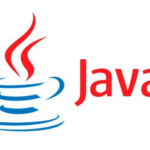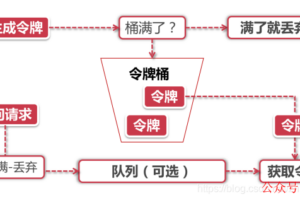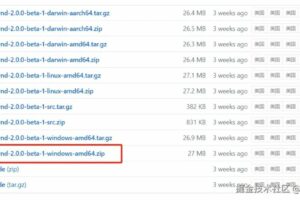众所周知springboot项目,使用springboot插件打包的话,会打包成一个包含依赖的可执行jar,非常方便。只要有java运行环境的电脑上,运行java -jar xxx.jar就可以直接运行项目。
但是这样的缺点也很明显,如果我要改个配置,要将jar包中的配置文件取出来,修改完再放回去。这样做在windows下还比较容易。如果在linux上面就很费劲了。
另外如果代码中需要读取一些文件(比如说一张图片),也被打进jar中,就没办法像在磁盘中时一句File file = new File(path)代码就可以读取了。(当然这个可以使用spring的ClassPathResource来解决)。
还有很多公司项目上线后,都是增量发布,这样如果只有一个jar 的话,增量发布也是很麻烦的事情。虽然我是很讨厌这种增量发布的方式,因为会造成线上生产环境和开发环境有很多不一致的地方,这样在找问题的时候会走很多弯路。很不幸我现在在的项目也是这样的情况,而且最近接的任务就是用springboot搭建一个定时任务服务,为了维护方便,最后决定将项目打包成zip进行部署。
网上找到了很多springboot打包成zip的文章,不过基本都是将依赖从springboot的jar中拿出来放到lib目录中,再将项目的jar包中META-INF中指定lib到classpath中。这样做还是会有上面的问题。
最后我决定自己通过maven-assembly-plugin来实现这个功能。
打包
首先maven-assembly-plugin是将项目打包的一个插件。可以通过指定配置文件来决定打包的具体要求。
我的想法是将class打包到classes中,配置文件打包到conf中,项目依赖打包到lib中,当然还有自己编写的启动脚本在bin目录中。
如图

maven的target/classes下就是项目编译好的代码和配置文件。原来的做法是在assembly.xml中配置筛选,将该目录下class文件打包进classes中,除class文件打包到conf中(bin目录文件打包进bin目录,项目依赖打包进lib目录)。结果发现conf目录下会有空文件夹(java包路径)。
pom.xml
<plugin>
<artifactId>maven-assembly-plugin</artifactId>
<configuration>
<appendAssemblyId>false</appendAssemblyId>
<descriptors>
<descriptor>assembly/assembly.xml</descriptor>
</descriptors>
</configuration>
<executions>
<execution>
<id>make-assembly</id>
<phase>package</phase>
<goals>
<goal>single</goal>
</goals>
</execution>
</executions>
</plugin>
assembly.xml
<assembly
xmlns="http://maven.apache.org/plugins/maven-assembly-plugin/assembly/1.1.2"
xmlns:xsi="http://www.w3.org/2001/XMLSchema-instance"
xsi:schemaLocation="http://maven.apache.org/plugins/maven-assembly-plugin/assembly/1.1.2 http://maven.apache.org/xsd/assembly-1.1.2.xsd">
<id>package</id>
<formats>
<format>zip</format>
</formats>
<includeBaseDirectory>true</includeBaseDirectory>
<dependencySets>
<dependencySet>
<useProjectArtifact>true</useProjectArtifact>
<outputDirectory>lib</outputDirectory>
<excludes>
<exclude>
${groupId}:${artifactId}
</exclude>
</excludes>
</dependencySet>
</dependencySets>
<fileSets>
<fileSet>
<directory>bin</directory>
<outputDirectory>/bin</outputDirectory>
<fileMode>777</fileMode>
</fileSet>
<fileSet>
<directory>${project.build.directory}/conf</directory>
<outputDirectory>/conf</outputDirectory>
<excludes>
<exclude>**/*.class</exclude>
<exclude>META-INF/*</exclude>
</excludes>
</fileSet>
<fileSet>
<directory>${project.build.directory}/classes</directory>
<outputDirectory>/classes</outputDirectory>
<includes>
<include>**/*.class</include>
<include>META-INF/*</include>
</includes>
</fileSet>
</fileSets>
</assembly>
其实这样是不影响项目运行的,但是我看着很难受,尝试了很多方法去修改配置来达到不打包空文件夹的效果。但是都没成功。
然后我换了个方式,通过maven-resources-plugin插件将配置文件在编译的时候就复制一份到target/conf目录下,打包的时候配置文件从conf目录中取。这样就可以避免打包空白文件夹到conf目录中的情况。
pom.xml
<build>
<plugins>
<plugin>
<artifactId>maven-resources-plugin</artifactId>
<executions>
<execution>
<id>compile-resources</id>
<goals>
<goal>resources</goal>
</goals>
<configuration>
<encoding>utf-8</encoding>
<useDefaultDelimiters>true</useDefaultDelimiters>
<resources>
<resource>
<directory>src/main/resources/</directory>
<filtering>true</filtering>
<includes><!--只对yml文件进行替换-->
<include>*.yml</include>
</includes>
</resource>
<resource>
<directory>src/main/resources/</directory>
<filtering>false</filtering>
</resource>
</resources>
</configuration>
</execution>
<execution>
<id>copy-resources</id>
<goals>
<goal>resources</goal>
</goals>
<configuration>
<encoding>utf-8</encoding>
<useDefaultDelimiters>true</useDefaultDelimiters>
<resources>
<resource>
<directory>src/main/resources/</directory>
<filtering>true</filtering>
<includes><!--只对yml文件进行替换-->
<include>*.yml</include>
</includes>
</resource>
<resource>
<directory>src/main/resources/</directory>
<filtering>false</filtering>
</resource>
</resources>
<outputDirectory>${project.build.directory}/conf</outputDirectory>
</configuration>
</execution>
</executions>
</plugin>
<!-- springboot maven打包-->
<plugin>
<groupId>org.springframework.boot</groupId>
<artifactId>spring-boot-maven-plugin</artifactId>
</plugin>
<plugin>
<artifactId>maven-assembly-plugin</artifactId>
<configuration>
<appendAssemblyId>false</appendAssemblyId>
<descriptors>
<descriptor>assembly/assembly.xml</descriptor>
</descriptors>
</configuration>
<executions>
<execution>
<id>make-assembly</id>
<phase>package</phase>
<goals>
<goal>single</goal>
</goals>
</execution>
</executions>
</plugin>
</plugins>
</build>
assembly.xml
<assembly
xmlns="http://maven.apache.org/plugins/maven-assembly-plugin/assembly/1.1.2"
xmlns:xsi="http://www.w3.org/2001/XMLSchema-instance"
xsi:schemaLocation="http://maven.apache.org/plugins/maven-assembly-plugin/assembly/1.1.2 http://maven.apache.org/xsd/assembly-1.1.2.xsd">
<id>package</id>
<formats>
<format>zip</format>
<format>tar.gz</format>
</formats>
<includeBaseDirectory>true</includeBaseDirectory>
<dependencySets>
<dependencySet>
<useProjectArtifact>true</useProjectArtifact>
<outputDirectory>lib</outputDirectory>
<excludes>
<exclude>
${groupId}:${artifactId}
</exclude>
</excludes>
</dependencySet>
</dependencySets>
<fileSets>
<fileSet>
<directory>bin</directory>
<outputDirectory>/bin</outputDirectory>
<fileMode>777</fileMode>
</fileSet>
<fileSet>
<directory>${project.build.directory}/conf</directory>
<outputDirectory>/conf</outputDirectory>
</fileSet>
<fileSet>
<directory>${project.build.directory}/classes</directory>
<outputDirectory>/classes</outputDirectory>
<includes>
<include>**/*.class</include>
<include>META-INF/*</include>
</includes>
</fileSet>
</fileSets>
</assembly>
pom文件中resources插件配置了2个execution,一个是正常往classes中写配置文件的execution,一个是往conf写配置文件的execution。这样做的好处是不影响maven本身的打包逻辑。如果再配置一个springboot的打包插件,也可以正常打包,执行。
执行
原来打包成jar后,只要一句java -jar xxx.jar就可以启动项目。现在为多个文件夹的情况下,就要手动指定环境,通过java -classpath XXX xxx.xxx.MainClass来启动项目,所以写了启动脚本。
run.sh
#!/bin/bash
#Java程序所在的目录(classes的上一级目录)
APP_HOME=..
#需要启动的Java主程序(main方法类)
APP_MAIN_CLASS="io.github.loanon.springboot.MainApplication"
#拼凑完整的classpath参数,包括指定lib目录下所有的jar
CLASSPATH="$APP_HOME/conf:$APP_HOME/lib/*:$APP_HOME/classes"
s_pid=0
checkPid() {
java_ps=`jps -l | grep $APP_MAIN_CLASS`
if [ -n "$java_ps" ]; then
s_pid=`echo $java_ps | awk '{print $1}'`
else
s_pid=0
fi
}
start() {
checkPid
if [ $s_pid -ne 0 ]; then
echo "================================================================"
echo "warn: $APP_MAIN_CLASS already started! (pid=$s_pid)"
echo "================================================================"
else
echo -n "Starting $APP_MAIN_CLASS ..."
nohup java -classpath $CLASSPATH $APP_MAIN_CLASS >./st.out 2>&1 &
checkPid
if [ $s_pid -ne 0 ]; then
echo "(pid=$s_pid) [OK]"
else
echo "[Failed]"
fi
fi
}
echo "start project......"
start
run.cmd
@echo off set APP_HOME=.. set CLASS_PATH=%APP_HOME%/lib/*;%APP_HOME%/classes;%APP_HOME%/conf; set APP_MAIN_CLASS=io.github.loanon.springboot.MainApplication java -classpath %CLASS_PATH% %APP_MAIN_CLASS%
这样就可以启动项目了。
停止
linux下停止tomcat一般怎么做?当然是通过运行shutdown.sh。这样做有什么好处呢?可以优雅停机。何为优雅停机?简单点说就是让代码把做了一半工作的做完,还没做的(新的任务,请求)就不要做了,然后停机。
因为做的是定时任务处理数据的功能。试想下如果一个任务做了一半,我给停了,这个任务处理的数据被我标记了在处理中,下次重启后,就不再处理,那么这些数据就一直不会再被处理。所以需要像tomcat一样能优雅停机。
网上查询springboot优雅停机相关资料。主要是使用spring-boot-starter-actuator,不过很多人说这个在1.X的springboot中可以用,springboot 2.X不能用,需要自己写相关代码来支持,亲测springboot 2.0.4.RELEASE可以用。pom文件中引入相关依赖。
pom.xml
<?xml version="1.0" encoding="UTF-8"?>
<project xmlns="http://maven.apache.org/POM/4.0.0"
xmlns:xsi="http://www.w3.org/2001/XMLSchema-instance"
xsi:schemaLocation="http://maven.apache.org/POM/4.0.0 http://maven.apache.org/xsd/maven-4.0.0.xsd">
<modelVersion>4.0.0</modelVersion>
<parent>
<groupId>org.springframework.boot</groupId>
<artifactId>spring-boot-starter-parent</artifactId>
<version>2.0.4.RELEASE</version>
<relativePath/> <!-- lookup parent from repository -->
</parent>
<groupId>io.github.loanon</groupId>
<artifactId>spring-boot-zip</artifactId>
<version>1.0.0-SNAPSHOT</version>
<properties>
<java.version>1.8</java.version>
<encoding>UTF-8</encoding>
<maven.compiler.encoding>UTF-8</maven.compiler.encoding>
<project.build.sourceEncoding>UTF-8</project.build.sourceEncoding>
<project.reporting.outputEncoding>UTF-8</project.reporting.outputEncoding>
<maven.compiler.source>${java.version}</maven.compiler.source>
<maven.compiler.target>${java.version}</maven.compiler.target>
</properties>
<dependencies>
<dependency>
<groupId>org.springframework.boot</groupId>
<artifactId>spring-boot-starter-web</artifactId>
</dependency>
<dependency>
<groupId>org.springframework.boot</groupId>
<artifactId>spring-boot-starter-logging</artifactId>
</dependency>
<!-- springboot监控 -->
<dependency>
<groupId>org.springframework.boot</groupId>
<artifactId>spring-boot-starter-actuator</artifactId>
</dependency>
<!--springboot自定义配置-->
<dependency>
<groupId>org.springframework.boot</groupId>
<artifactId>spring-boot-autoconfigure-processor</artifactId>
</dependency>
<!--定时任务-->
<dependency>
<groupId>org.springframework.boot</groupId>
<artifactId>spring-boot-starter-quartz</artifactId>
</dependency>
<!--发送http请求 -->
<dependency>
<groupId>org.apache.httpcomponents</groupId>
<artifactId>httpclient</artifactId>
</dependency>
<dependency>
<groupId>org.apache.httpcomponents</groupId>
<artifactId>httpmime</artifactId>
</dependency>
</dependencies>
<build>
<plugins>
<plugin>
<artifactId>maven-resources-plugin</artifactId>
<executions>
<execution>
<id>compile-resources</id>
<goals>
<goal>resources</goal>
</goals>
<configuration>
<encoding>utf-8</encoding>
<useDefaultDelimiters>true</useDefaultDelimiters>
<resources>
<resource>
<directory>src/main/resources/</directory>
<filtering>true</filtering>
<includes><!--只对yml文件进行替换-->
<include>*.yml</include>
</includes>
</resource>
<resource>
<directory>src/main/resources/</directory>
<filtering>false</filtering>
</resource>
</resources>
</configuration>
</execution>
<execution>
<id>copy-resources</id>
<goals>
<goal>resources</goal>
</goals>
<configuration>
<encoding>utf-8</encoding>
<useDefaultDelimiters>true</useDefaultDelimiters>
<resources>
<resource>
<directory>src/main/resources/</directory>
<filtering>true</filtering>
<includes><!--只对yml文件进行替换-->
<include>*.yml</include>
</includes>
</resource>
<resource>
<directory>src/main/resources/</directory>
<filtering>false</filtering>
</resource>
</resources>
<outputDirectory>${project.build.directory}/conf</outputDirectory>
</configuration>
</execution>
</executions>
</plugin>
<!-- springboot maven打包-->
<plugin>
<groupId>org.springframework.boot</groupId>
<artifactId>spring-boot-maven-plugin</artifactId>
</plugin>
<plugin>
<artifactId>maven-assembly-plugin</artifactId>
<configuration>
<appendAssemblyId>false</appendAssemblyId>
<descriptors>
<descriptor>assembly/assembly.xml</descriptor>
</descriptors>
</configuration>
<executions>
<execution>
<id>make-assembly</id>
<phase>package</phase>
<goals>
<goal>single</goal>
</goals>
</execution>
</executions>
</plugin>
</plugins>
</build>
</project>
在application.yml中配置一下
application.yml
management: #开启监控管理,优雅停机
server:
ssl:
enabled: false
endpoints:
web:
exposure:
include: "*"
endpoint:
health:
show-details: always
shutdown:
enabled: true #启用shutdown端点
启动项目,可以通过POST方式访问/actuator/shutdown让项目停机。
实际线上可能没办法方便的发送POST请求,所以写个类处理下
Shutdown.java
package io.github.loanon.springboot;
import org.apache.http.client.HttpClient;
import org.apache.http.client.methods.HttpPost;
import org.apache.http.impl.client.HttpClients;
import java.io.IOException;
/**
* 应用关闭入口
* @author dingzg
*/
public class Shutdown {
public static void main(String[] args) {
String url = null;
if (args.length > 0) {
url = args[0];
} else {
return;
}
HttpClient httpClient = HttpClients.createDefault();
HttpPost httpPost = new HttpPost(url);
try {
httpClient.execute(httpPost);
} catch (IOException e) {
e.printStackTrace();
}
}
}
只要将启动脚本中的启动类改成Shutdown类,并指定请求的地址即可。
stop.sh
#!/bin/bash
#Java程序所在的目录(classes的上一级目录)
APP_HOME=..
#需要启动的Java主程序(main方法类)
APP_MAIN_CLASS="io.github.loanon.springboot.MainApplication"
SHUTDOWN_CLASS="io.github.loanon.springboot.Shutdown"
#拼凑完整的classpath参数,包括指定lib目录下所有的jar
CLASSPATH="$APP_HOME/conf:$APP_HOME/lib/*:$APP_HOME/classes"
ARGS="http://127.0.0.1:8080/actuator/shutdown"
s_pid=0
checkPid() {
java_ps=`jps -l | grep $APP_MAIN_CLASS`
if [ -n "$java_ps" ]; then
s_pid=`echo $java_ps | awk '{print $1}'`
else
s_pid=0
fi
}
stop() {
checkPid
if [ $s_pid -ne 0 ]; then
echo -n "Stopping $APP_MAIN_CLASS ...(pid=$s_pid) "
nohup java -classpath $CLASSPATH $SHUTDOWN_CLASS $ARGS >./shutdown.out 2>&1 &
if [ $? -eq 0 ]; then
echo "[OK]"
else
echo "[Failed]"
fi
sleep 3
checkPid
if [ $s_pid -ne 0 ]; then
stop
else
echo "$APP_MAIN_CLASS Stopped"
fi
else
echo "================================================================"
echo "warn: $APP_MAIN_CLASS is not running"
echo "================================================================"
fi
}
echo "stop project......"
stop
stop.cmd
@echo off set APP_HOME=.. set CLASS_PATH=%APP_HOME%/lib/*;%APP_HOME%/classes;%APP_HOME%/conf; set SHUTDOWN_CLASS=io.github.loanon.springboot.Shutdown set ARGS=http://127.0.0.1:8080/actuator/shutdown java -classpath %CLASS_PATH% %SHUTDOWN_CLASS% %ARGS%
这样就可以通过脚本来启停项目。
其他
关于停机这块还是有缺点,主要是安全性。如果不加校验都可以访问接口,别人也就可以随便让我们的项目停机,实际操作过程中我是通过将web地址绑定到127.0.0.1这个地址上,不允许远程访问。当然也可添加spring-security做严格的权限控制,主要项目中没有用到web功能,只是spring-quartz的定时任务功能,所以就将地址绑定到本地才能访问。而且项目本身也是在内网运行,基本可以保证安全。
 微信赞赏
微信赞赏 支付宝扫码领红包
支付宝扫码领红包





